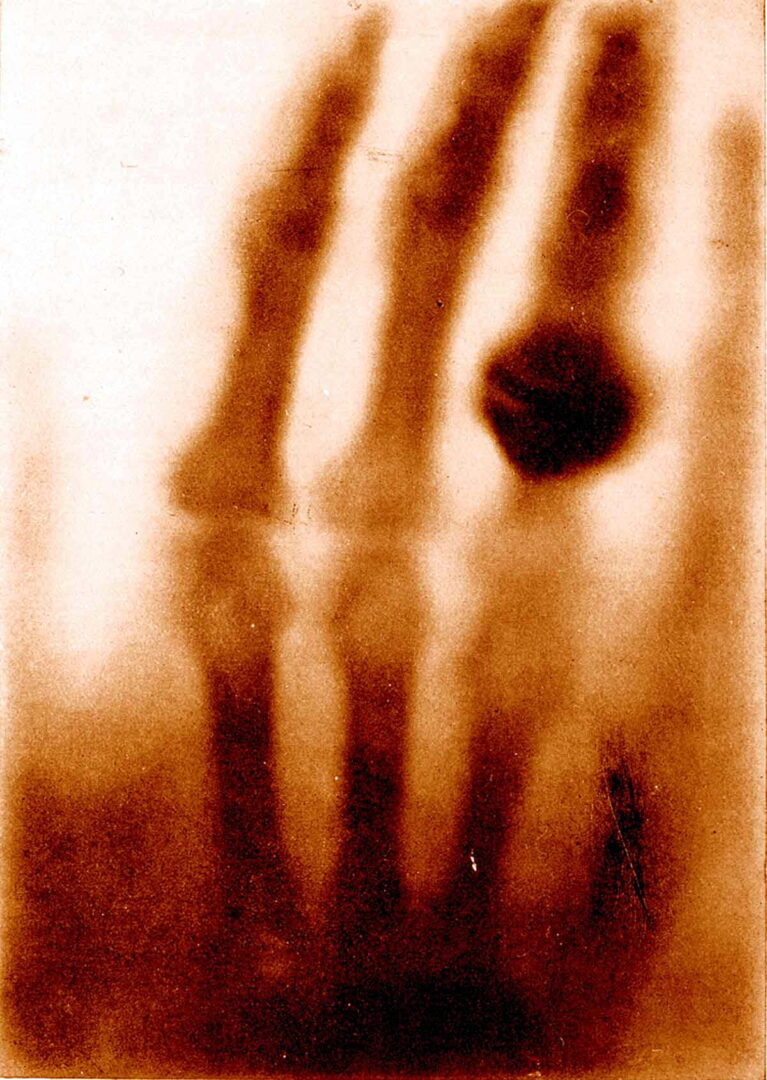Something to Glow About
On November 8, 1895, in the evening, physicist Wilhelm Conrad Roentgen [Röntgen] discovered X-rays.
Previously, he had investigated the electrical conductivity of crystals and electromagnetic influences on polarized light. This particular evening, Roentgen experimented with the flow of electric current through a glass tube that was covered except for a small window that released the glow or fluorescence produced as charged electrons struck the glass wall of the tube. As he darkened the room, he noticed a nearby glow. A screen he had prepared with a coating of metal salt also gave off light… even when placed over a meter away from his electron tube.
Roentgen figured the tube radiated some form of energy that travelled to the barium salt and caused it to fluoresce. He investigated by placing different materials between the tube and the coated screen and found them to appear transparent or to show up internal structures and fogged photographic plates. He even tried out simple tests for light but there seemed to be no reflection or refraction involved.

Unsure of what the radiation was, Roentgen used the mathematical symbol for an unknown and called the phenomenon “X” then proceeded to make X-ray photographs of objects, object interiors, and his wife’s hand. The phenomenon was known as Roentgen radiation.
X-ray image of Mrs. Roentgen’s hand – the first X-ray ever taken of the human body.
That first introductory phenomenon became the first step in the development of Fluoroscopy, an imaging technique using an X-ray source focused on a person, through which the X-rays pass to cast a shadow of or reveal that person’s internal structure onto an image on a screen.
Roentgen became the first to win a Nobel Prize in Physics… and paved the way for the subsequent radioactivity discoveries of Becquerel and the Curies. Among many honours, Roentgen also received the Royal Society’s Rumford Medal, the Italian National Academy of the Sciences’ Matteucci Medal; and The Franklin Institute’s Elliott Cresson Gold Medal.
B Bondar / Real World Content Advantage